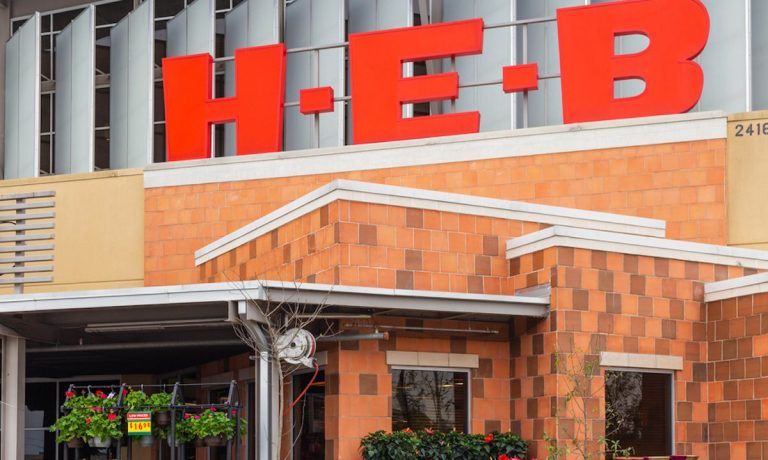
This week in grocery, H-E-B expands its direct delivery capabilities, Albertsons looks to win in retail media, and grocers in the United Kingdom see inflation three times larger than in the United States.
Texan grocer H-E-B, which has more than 400 stores in its home state and Mexico, announced Tuesday (June 20) that it is opening an eCommerce fulfillment center equipped with automated technologies in Plano, Texas, to fulfill curbside pickup and home delivery orders.
“At H-E-B, we’re always looking for ways to offer Texans a better shopping experience and more options to choose how they shop, pay for and receive their products,” H-E-B Group Vice President of eCommerce Kedar Patel said in a statement. “Across our business, we are adopting innovative technologies that give our partners the tools they need to provide top-quality service to our customers whether they shop online or in our stores.”
The news comes just a few months after grocery technology giant Ocado shared that U.S. grocery behemoth Kroger is slowing down its own automated fulfillment center rollout. Indeed, on the grocer’s earnings call, the company discussed its efforts to make these facilities operate more efficiently, but not to open new centers.
With growing demand for online grocery options, merchants are looking for ways to win consumers’ direct loyalty rather than divert the sale (and pay a commission) to a third-party service such as Instacart.
Research from PYMNTS’ study “Tracking the Digital Payments Takeover: Catching the Coming eCommerce Wave,” created in collaboration with Amazon Web Services (AWS), revealed that 32% of grocery shoppers said they are very or extremely likely to increase their online grocery purchases in the next 12 months.
“In online grocery today, the biggest shift is from independent retailers relying on others in a way that is not sustainable and not profitable to independent retailers, taking the reins and taking control and investing in this channel because of all the value that it can create,” Jeff Anders, co-founder and CEO of eGrocery technology company Grocerist, told PYMNTS in an interview.
Grocery giant Albertsons shared a report arguing for a standardized system of measuring the performance of grocers’ retail media networks, a move that comes as the company faces increasing competition from smaller brands.
“Retail media networks (RMNs) are at a pivotal moment in their growth,” the company stated in the report. “In the last two years, advertiser investment in these platforms has surged, and marketing industry analysts predict growth to continue in the near term. … The lack of common standards puts a costly burden on advertisers and agencies to meet the requirements of varying RMNs. Without overcoming these challenges, RMNs put their future success at risk.”
Many smaller grocery chains have announced the launch of their RMNs, looking to drive revenue from advertisers and threatening to gain share of that spending from industry giants’ networks. In the last year, Northeast Grocery, Sprouts, BJ’s Wholesale Club, The Fresh Market and others have announced their entry into the space.
By introducing a standardized system, especially in the lead-up to its merger with Kroger, Albertsons has the opportunity to show brands how leading players’ capabilities surpass these smaller competitors.
As year-over-year grocery inflation in the U.S. slows down, lapping high inflation last year and hovering at the mid-single digits, according to the Bureau of Labor Statistics Consumer Price Index (CPI), the United Kingdom continues to see double-digit increases.
According to data released Wednesday (June 21) from the country’s Office of National Statistics, food and non-alcoholic beverage prices rose by 18.4% in May.
These findings suggest that, while inflation-related changes in grocery spending habits such as switching to cheaper merchants and cutting back on nonessential purchases could soon ease in the U.S., grocers in the U.K. must continue to grapple with these behavioral shifts for some time to come.